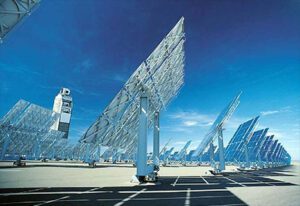Energy-saving devices: how do they work and how can you use them correctly?

Energy-saving devices are becoming increasingly popular as people look for ways to reduce their energy consumption and save money on their utility bills. These devices can help you save energy in a variety of ways, from making your appliances more efficient to helping you control your thermostat remotely.
How do energy-saving devices work?
Energy-saving devices work by using a variety of technologies to reduce the amount of energy that your appliances and other devices use. Some of the most common technologies include:
- Intelligent thermostats: These thermostats can be programmed to automatically adjust the temperature of your home based on your schedule. This can help you save energy by preventing your HVAC system from running when you’re not home.
- Energy-efficient appliances: These appliances use less energy to operate than standard appliances. They often have features like insulation and electronic controls that help them operate more efficiently.
- Light-emitting diodes (LEDs): LEDs are a type of light bulb that uses much less energy than traditional incandescent bulbs. They also last much longer, so you won’t have to replace them as often.
How can you use energy-saving devices correctly?
To get the most out of your energy-saving devices, it’s important to use them correctly. Here are a few tips:
- Read the instructions: Before you use an energy-saving device, be sure to read the instructions carefully. This will help you understand how the device works and how to use it most effectively.
- Set your thermostat correctly: Your thermostat is one of the biggest energy users in your home. To save energy, set your thermostat to a comfortable temperature and then use a programmable thermostat to adjust the temperature when you’re not home.
- Replace your light bulbs: If you haven’t replaced your light bulbs in a while, it’s time to do so. LEDs are a great option for energy-saving light bulbs.
- Unplug appliances when you’re not using them: Even when they’re turned off, many appliances continue to draw power. This is known as “phantom load.” To save energy, unplug appliances when you’re not using them.
Conclusion
Energy-saving devices can help you save money on your energy bills and reduce your carbon footprint. By using these devices correctly, you can maximize your savings and help the environment.
Here are some additional tips for using energy-saving devices correctly:
- Clean your appliances regularly: Dust and dirt can build up on appliances and make them less efficient.
- Keep your home well-sealed: Air leaks can cause your HVAC system to work harder, which can lead to higher energy bills.
- Use natural light whenever possible: Opening your curtains and blinds during the day can help you reduce your energy use.
- Consider getting a home energy audit: A home energy audit can identify areas where you can improve your energy efficiency.
By following these tips, you can use energy-saving devices correctly and save money on your energy bills.

